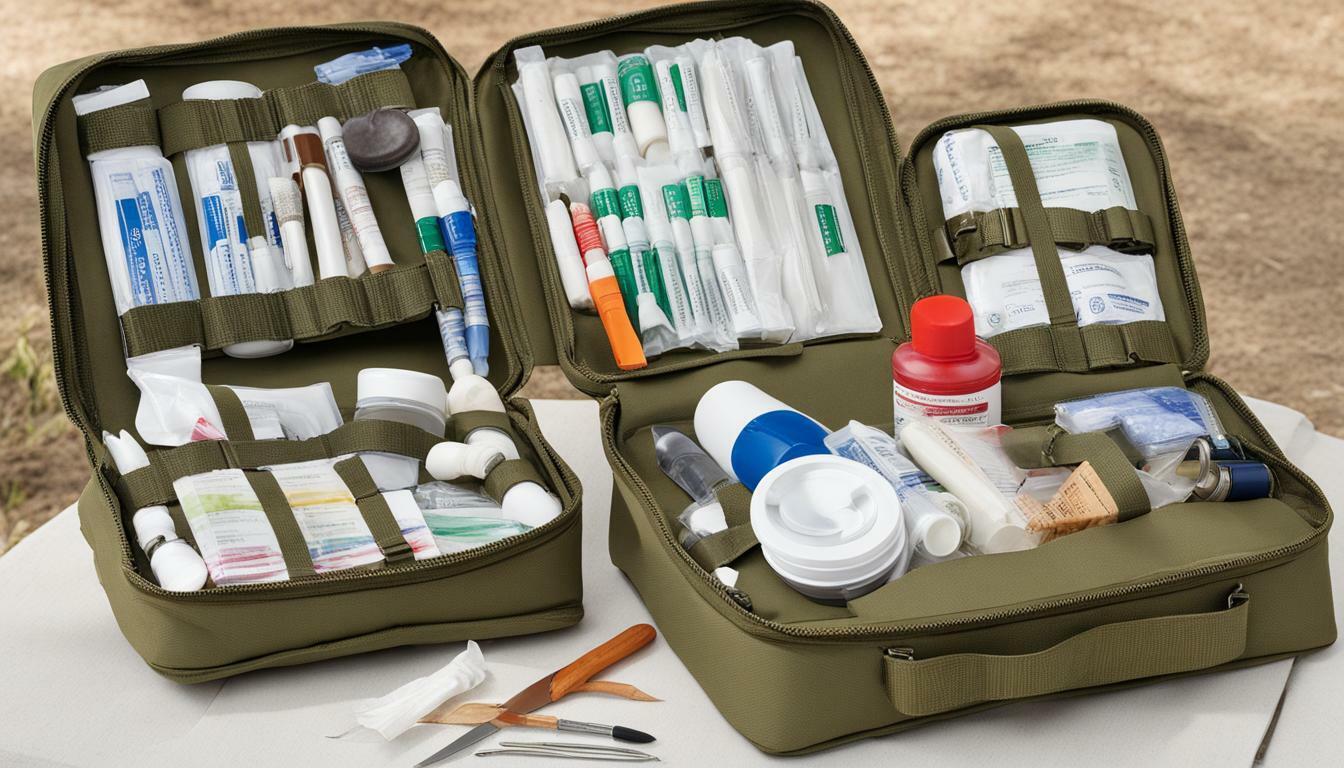Outdoor watercolour workshops can offer an incomparable painting experience, but they can also present potential risks. Being prepared with a first aid kit is essential for ensuring artist safety and emergency preparedness in any outdoor painting setting.
Outdoor painting can pose a variety of risks, including exposure to harsh weather conditions, wildlife encounters, and accidental falls and injuries. Having a first aid kit on hand can provide peace of mind and help prevent minor accidents from turning into more severe medical emergencies.
Key Takeaways:
- First aid kits are essential for emergency preparedness and artist safety in outdoor watercolour workshops.
- Outdoor painting presents various potential risks and requires proper safety equipment, including gloves, aprons, and eye protection.
- Artists must prioritize their safety by following practical safety tips, creating a safe workshop environment, and building awareness of potential hazards.
The Importance of Safety Equipment in Outdoor Painting
When it comes to outdoor painting, safety should always be a top priority. Using proper safety equipment can protect artists from potential accidents and injuries, ensuring a safe and enjoyable painting experience.
There are several essential pieces of safety gear that artists should consider when painting outdoors. Gloves can protect hands from paint and chemicals, while aprons can shield clothing from stains and spills. Eye protection is also crucial, as it can prevent debris or paint from getting into the eyes.
Choosing high-quality art supplies is equally important for a safe painting experience. Cheap or low-quality materials may contain harmful chemicals or have unpredictable results when used outdoors. It’s always best to invest in professional-grade goods to ensure the safety of both the artist and the environment.
The Importance of Safety Equipment in Outdoor Painting
“Using proper safety equipment can protect artists from potential accidents and injuries, ensuring a safe and enjoyable painting experience.”
Whether you’re painting in the countryside or in an urban setting, it’s important to be prepared for any potential hazards. By using the right safety equipment and high-quality art supplies, artists can enjoy the creative freedom that comes with painting outdoors while also safeguarding their health and well-being.
First Aid Kits: Your Safety Net in the Wilderness
Outdoor watercolor workshops offer a wonderful opportunity to connect with nature and explore your artistic skills, but it is crucial to be prepared for potential emergencies. In remote wilderness settings, accidents and injuries can happen, making it essential to have a well-stocked first aid kit on hand. The right first aid supplies can help you respond promptly and effectively to health issues, from minor cuts and scrapes to more severe injuries.
Emergency preparedness is an essential aspect of outdoor painting, and a comprehensive first aid kit can be a vital safety net. The kit should contain essential medical supplies, such as bandages, gauze pads, and tweezers, as well as medications for pain relief and allergy symptoms. It is important to choose the right items for wilderness painting, such as insect bite relief and sunscreen with a high SPF rating. Your first aid kit should be kept in a waterproof container and stored in an accessible location, so all participants know where it is in the event of an emergency.
As an artist, it is vital to prioritize your safety and wellbeing in the wilderness. A well-prepared first aid kit can be a lifesaver in an emergency situation, helping you stay focused on your art while staying safe. Whether you’re participating in an organized workshop or venturing out on your own, taking the time to prepare a comprehensive first aid kit can make all the difference in staying safe while enjoying the great outdoors.
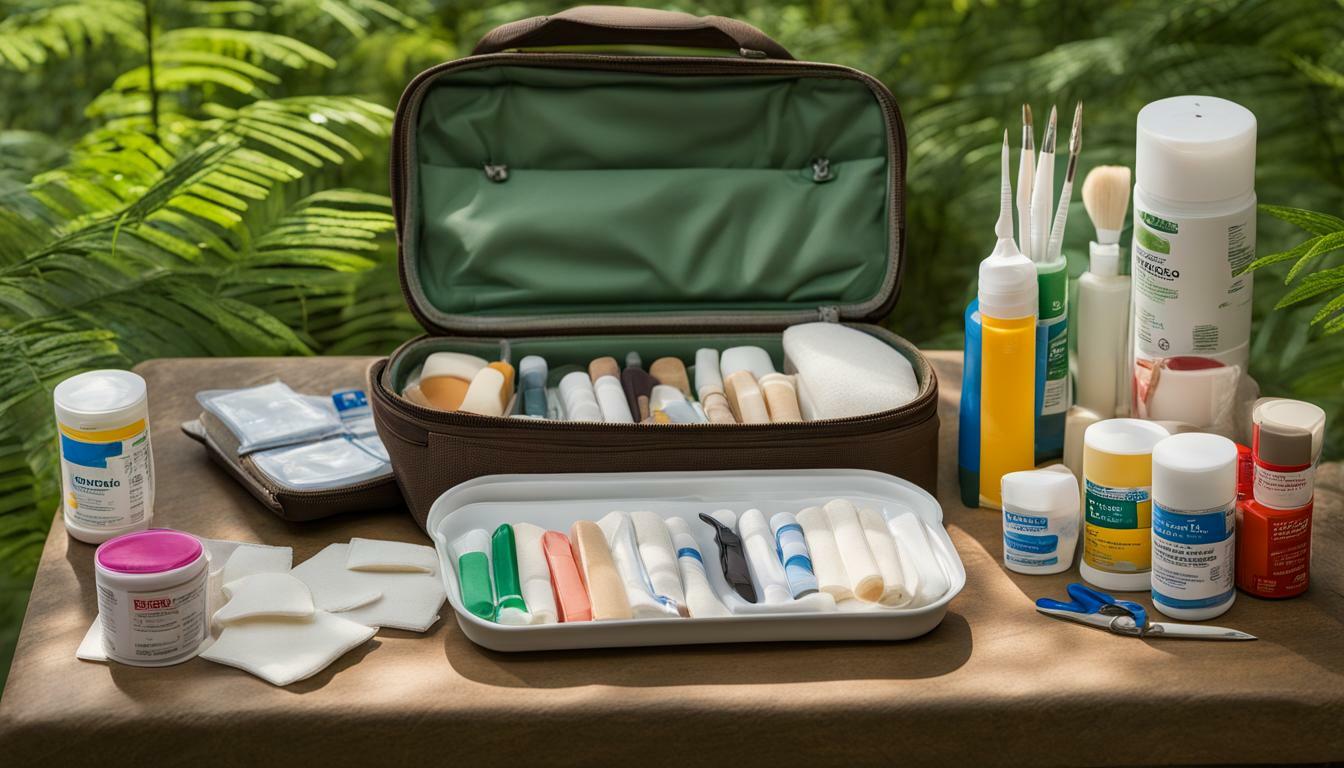
Essential First Aid Kit Supplies for Outdoor Watercolour Workshops
When it comes to outdoor watercolour workshops, being prepared for any situation is crucial in ensuring artist safety. A well-stocked first aid kit is an essential item for any workshop setting, especially when working in the great outdoors. Here are some of the most important first aid kit supplies to consider:
| Item | Description |
|---|---|
| Adhesive bandages | Used for covering minor cuts and scrapes |
| Gauze pads | Used for covering larger wounds |
| Antiseptic wipes | Used for cleaning wounds and preventing infection |
| Tweezers | Used for removing splinters or other foreign objects |
| Pain relief medication | Used for reducing pain and discomfort from injuries or headaches |
| Finger protectors | Designed to protect fingers from cuts and blisters while painting |
| Blister pads | Can be used to protect against blisters or other foot injuries during long outdoor hikes to painting locations |
In addition to these essential first aid kit supplies, it’s important to include any personal medications, allergy relief, or other medical items that may be necessary for you or your workshop participants. Once your first aid kit is stocked, it’s important to regularly check and restock it, so that it’s always ready to go when you need it.
Along with the first aid kit, it’s also important to have the proper safety gear and art workshop supplies on hand to ensure a safe and productive experience. By being well-prepared with the right equipment, artists can focus on creating beautiful watercolour art, without worrying about potential accidents.
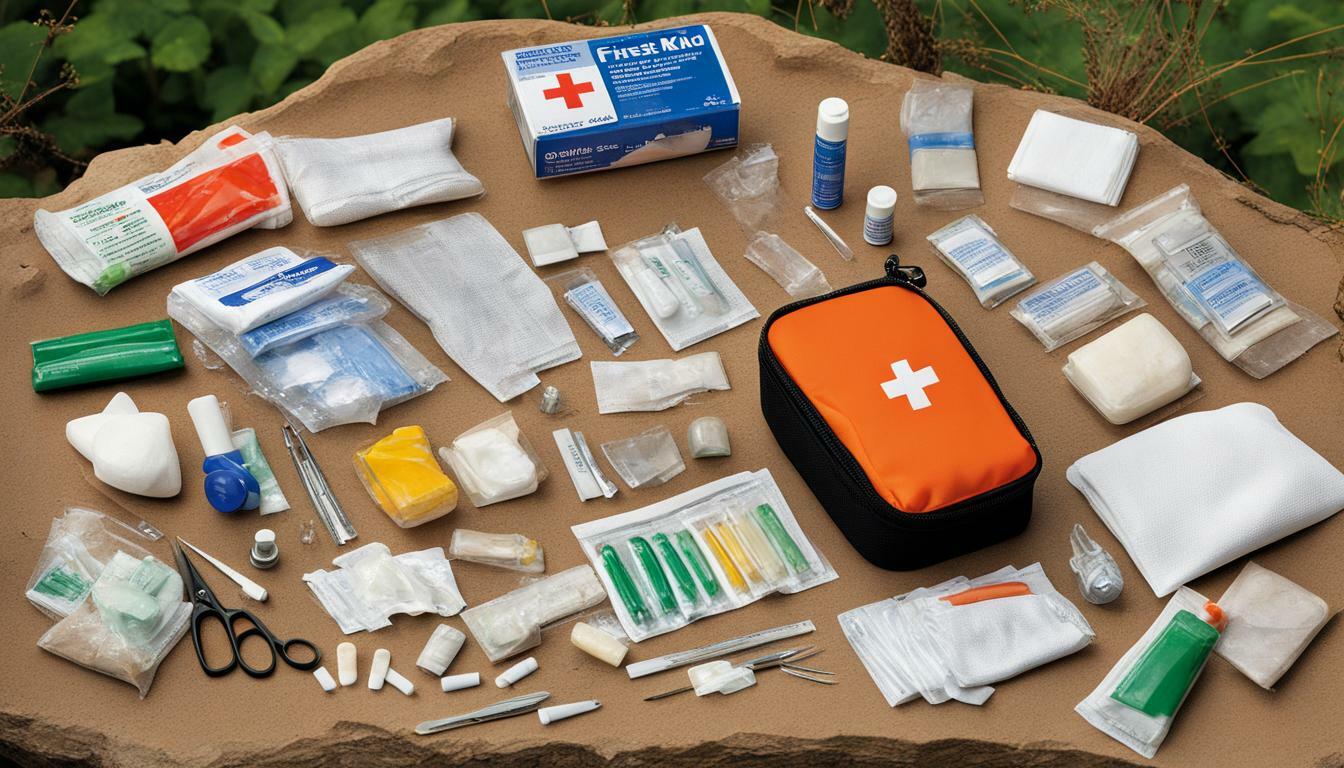
Safety Tips for Outdoor Watercolour Workshops
Outdoor watercolour workshops can be a fun and inspiring way to explore your creativity and connect with nature. However, it’s essential to prioritise painting safety while you’re enjoying the experience. Here are some practical tips to help you stay safe and healthy:
Choose a Safe Painting Location
Before setting up your painting station, take a moment to evaluate the surroundings. Look for a stable surface to place your art supplies, and make sure you have enough light to see your painting clearly. Also, consider accessibility and the proximity of water sources and other amenities. If you’re painting in a public area, be mindful of foot traffic and avoid obstructing pathways.
Use Proper Safety Equipment
Invest in high-quality safety gear, including gloves, aprons, and eye protection, to prevent accidents and injuries. Ensure you have adequate ventilation and avoid inhaling hazardous chemicals. Also, consider using non-toxic art supplies to further reduce the risk of health issues.
Take Care of Your Body
Painting can be physically demanding, so take care of your body while you’re working. Maintain good posture and ergonomics to prevent strain or injury. Take frequent breaks, stretch, and stay hydrated. Protect yourself from sunburn and insect bites by wearing appropriate clothing and applying insect repellent and sunscreen.
Stay Alert and Aware
Be aware of your surroundings and potential hazards, including wildlife encounters or changing weather conditions. Always carry a first aid kit and know how to use it in case of an emergency.

Share Your Knowledge
Encourage your fellow artists to prioritise painting safety and share your safety experiences and knowledge with each other. Consider including a safety briefing or demonstration at the beginning of each workshop and providing clear signage and designated safety zones.
By following these painting safety tips, you can enjoy the experience of creating beautiful watercolour artwork in the great outdoors while staying prepared and protected.
Creating a Safe Workshop Environment
When participating in outdoor watercolour workshops, safety should always be a top priority. This is why creating a safe workshop environment is of the utmost importance. The workshop organizer should communicate safety guidelines clearly and make sure all participants have access to safety equipment and art workshop supplies.
Adequate workspace, proper ventilation, and accessibility for all participants are key components of a safe workshop environment. Participants should have plenty of room to move around and the workspace should be free of any obstacles. Proper ventilation is essential to ensure that artists are not exposed to any harmful chemicals. It’s also important to ensure that the workshop space is accessible for anyone with mobility issues.
| Art Workshop Supplies | Safety Equipment |
|---|---|
| Watercolor paper | Gloves |
| Paintbrushes | Aprons |
| Water containers | Eye protection |
| Easel or painting surface | First aid kit |
Having the right art workshop supplies and safety equipment is also important. Watercolor paper, paintbrushes, water containers, and an easel or painting surface are essential for creating a successful painting. Adequate safety equipment such as gloves, aprons, eye protection, and a first aid kit are also important to ensure the safety of all participants.
Lastly, creating a safe and supportive environment requires active participation from everyone involved. Artists should be encouraged to share their safety experiences and knowledge with each other, and safety briefings or demonstrations should be given at the beginning of each workshop. Designated safety zones and clear signage should also be established to ensure that everyone stays safe during the workshop.

By taking these safety precautions and creating a safe workshop environment, artists can focus on the joy of creating art in the great outdoors.
Artist Safety: Building Awareness and Preparedness
Outdoor watercolor workshops are a fun and rewarding way to experience the beauty of nature while expressing your creative side. However, it’s important to be aware of the potential hazards associated with outdoor painting and take steps to ensure your safety. By building awareness and preparedness, you can enjoy a safe and fulfilling painting experience in any environment.
Emergency preparedness is a crucial aspect of artist safety, especially in outdoor watercolor workshops. Being prepared for potential accidents or medical emergencies can make a significant difference in the outcome. Consider creating a personalized emergency plan that includes contact information for local emergency services and a list of medical conditions or allergies. Review the plan with your workshop leader or fellow artists to ensure everyone is aware of the protocol.
It’s also essential to understand the risks associated with outdoor painting and take steps to mitigate them. From exposure to the elements to potential wildlife encounters, there are various factors to consider. Attend safety workshops or training programs to learn more about how to stay safe in the wilderness. By building your knowledge and awareness of potential hazards, you’ll be better equipped to avoid accidents or handle emergencies.
When attending outdoor watercolor workshops, also consider the importance of personal safety gear. Dress in appropriate clothing, such as comfortable, weather-resistant attire that covers your body. Wear sturdy shoes that provide good traction on uneven terrain. Protect yourself from the sun with a hat, sunscreen, and sunglasses. Additionally, consider using safety gear such as aprons, gloves, and eye protection to protect yourself from potentially toxic materials.
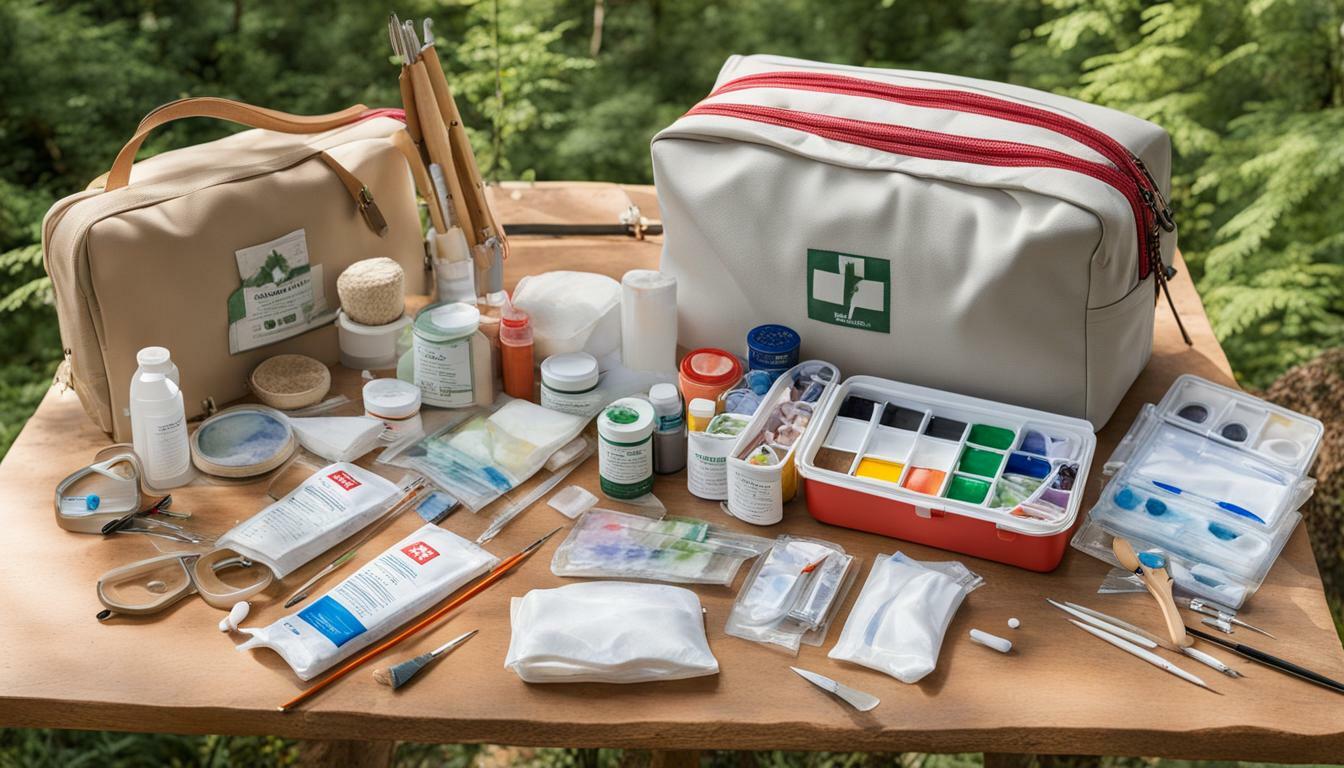
Overall, building awareness and preparedness for artist safety in outdoor watercolor workshops is crucial. By taking a proactive approach, you can minimize your risk of accidents or injuries and enjoy a safe and fulfilling painting experience. Remember to prioritize your safety and well-being, and don’t hesitate to speak up if you feel unsafe or have any concerns.
Incorporating Safety Measures into Outdoor Watercolour Workshops
Ensuring painting safety is critical to enjoying outdoor watercolour workshops. Safety equipment and art supplies play a key role in promoting a safe and supportive environment. Here are some practical suggestions for incorporating safety measures into your outdoor watercolour workshops.
Include Safety Briefings or Demonstrations
A safety briefing or demonstration at the beginning of each workshop is essential. It will make your participants aware of the potential risks and hazards that need to be avoided. You can walk them through the safety equipment and art supplies that you have provided and how they are used to keep everyone safe. Emphasize the importance of protective gear such as gloves, aprons, and eye protection when working with hazardous materials or tools.
Create Designated Safety Zones and Clear Signage
Designated safety zones and clear signage can help keep your participants safe. Have a particular area where participants can take a break and rest. Set up a first aid station and ensure that all participants know where it is. Clear signage can help participants easily find these areas.
Encourage Artists to Share their Safety Experiences and Knowledge with Each Other
Encourage your participants to share their safety experiences and knowledge with each other. This will help create a safe and supportive environment where everyone is looking out for each other. You can ask participants to share their safety tips or experiences before the workshop or at the end of the day. This will also help create a sense of community among your participants.
By incorporating these safety measures into your outdoor watercolour workshops, you can help ensure a safe and enjoyable experience for everyone. Remember, painting safety should always be a top priority.
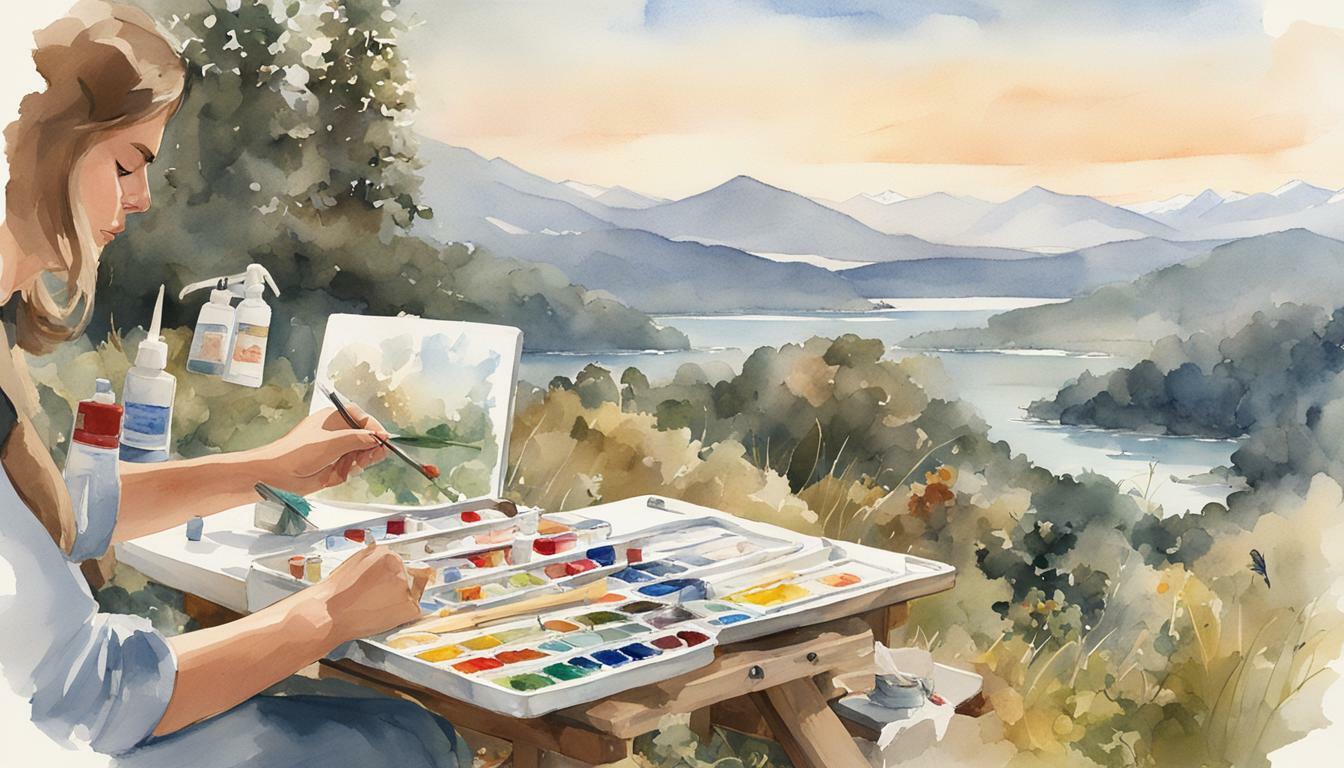
Conclusion
To enjoy the beauty of outdoor watercolor painting, safety should always be a top priority. First aid kits and safety equipment are essential items that can make a huge difference in an emergency. Through this article, we have discussed the importance of safety measures, safety equipment, and emergency preparedness in outdoor watercolor workshops.
Remember to always take the necessary precautions and include proper safety gear such as gloves, aprons, and eye protection. In addition, we have provided a list of essential first aid kit supplies suitable for outdoor painting. It is also important to create a safe workshop environment, including adequate workspace, ventilation, and clear communication.
By building awareness and preparedness for artist safety, we can protect ourselves and our fellow artists. Incorporating safety measures into our outdoor watercolor workshops, such as safety briefings, designated safety zones, and clear signage, can help promote a safe and supportive environment.
